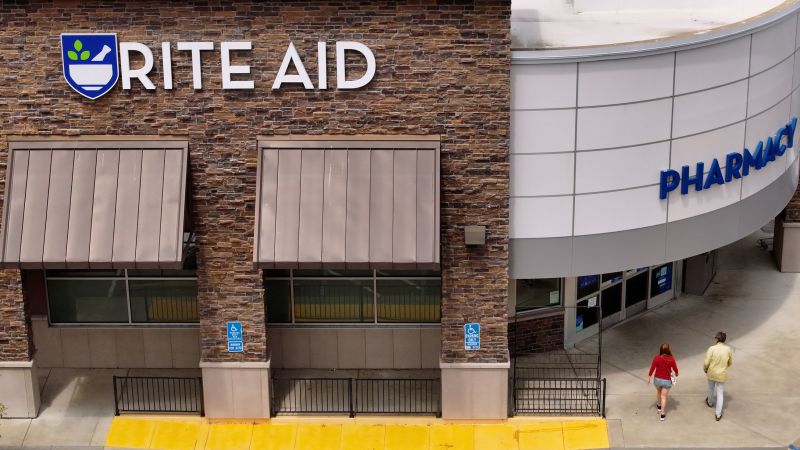Rite Aid, the well-known retail drugstore chain, made headlines recently as it announced it would be filing for bankruptcy for the second time. This move comes merely seven months after the company successfully exited Chapter 11 bankruptcy and transitioned into a private entity. The announcement signals an ongoing struggle for the chain that has, for years, grappled with mounting financial pressures and stiff competition from larger rivals in the pharmaceutical retail space.
In its recent bankruptcy filing, Rite Aid’s leadership expressed the intention to seek a buyer as part of its strategy to recover from its current predicament. By re-entering Chapter 11, the drugstore chain aims to streamline the process of finding a suitable acquirer while simultaneously assuring customers that its stores will remain operational during this tumultuous time. Matt Schroeder, Rite Aid’s CEO, indicated optimism in the form of substantial interest from various potential buyers, both national and regional. He emphasized that the main priorities during this transition will be to maintain pharmacy services without interruption and to safeguard employment for a significant number of staff members.
The challenges Rite Aid has faced are reflective of broader trends within the retail and healthcare industries. The initial bankruptcy in October 2023 can be attributed to what experts describe as a brutal climate for drugstores, particularly concerning Rite Aid’s positioning as a smaller player competing against giants like Walgreens and CVS. Legal troubles, specifically allegations of inappropriate opioid prescription practices, compounded the financial burden that left Rite Aid with a staggering debt of nearly $4 billion. It was a year-long process navigating through Chapter 11 bankruptcy before the chain emerged in September 2024 with a significant reduction of $2 billion in debt and plans to secure $2.5 billion in operational funding, although not without considerable closure of locations—around 500.
During the announcement regarding the second bankruptcy filing, Rite Aid confirmed it had arranged for nearly $2 billion in new financing to sustain its operations throughout the legal proceedings. Currently, the chain remains the third-largest standalone pharmacy operation in the United States, trailing significantly behind larger rivals and operating approximately 1,250 stores—nearly half of what it had just two years prior.
Rite Aid has previously been the subject of acquisition talks; notably, in 2015, Walgreens offered a substantial $17 billion to purchase the chain. However, regulatory concerns raised antitrust issues, resulting in a scaled-down deal in 2017 wherein Walgreens acquired just under 2,000 Rite Aid locations. This left Rite Aid significantly reduced in scale and ability to effectively compete in a saturated marketplace.
Market analysts have not found Rite Aid’s second bankruptcy filing surprising. Neil Saunders, a managing director at GlobalData, pointed out that the previous bankruptcy did little to resolve the underlying issues, leaving the chain vulnerable and almost in a continuous state of crisis. The landscape for retail pharmacies looks bleak with Rite Aid’s situation reflecting struggles across the sector, as evidenced by similar difficulties faced by competitors.
Walgreens Boots Alliance announced intentions to go private, with a deal valued around $24 billion expected to conclude later this year, amidst challenges including significant store closures—over 1,200—and a plummeting market cap. Similarly, CVS has closed more than 1,000 stores and initiated thousands of layoffs while experimenting with smaller-store formats to refocus on pharmacy services.
The turbulent landscape for these three major chains is notable, as they all have endured declining prescription reimbursements, resulting in decreases in their overall market values. Once valued at around $100 billion a decade ago, the combined worth of these chains has dwindled to about $9.5 billion. Not only have they faced financial challenges, but they have also struggled with over-expansion and competition from new players like Amazon and Target, alongside operational threats such as theft, all of which detracts from their profitability and overall sustainability in the retail pharmacy sector.



